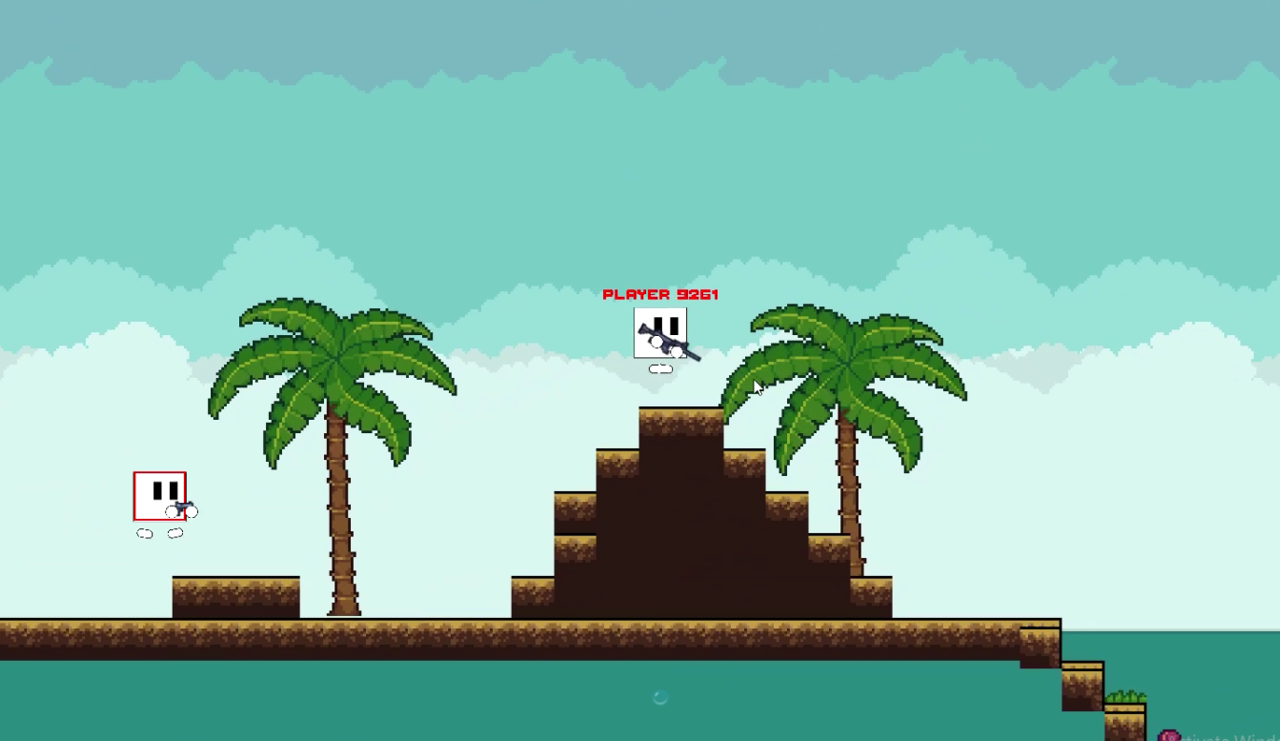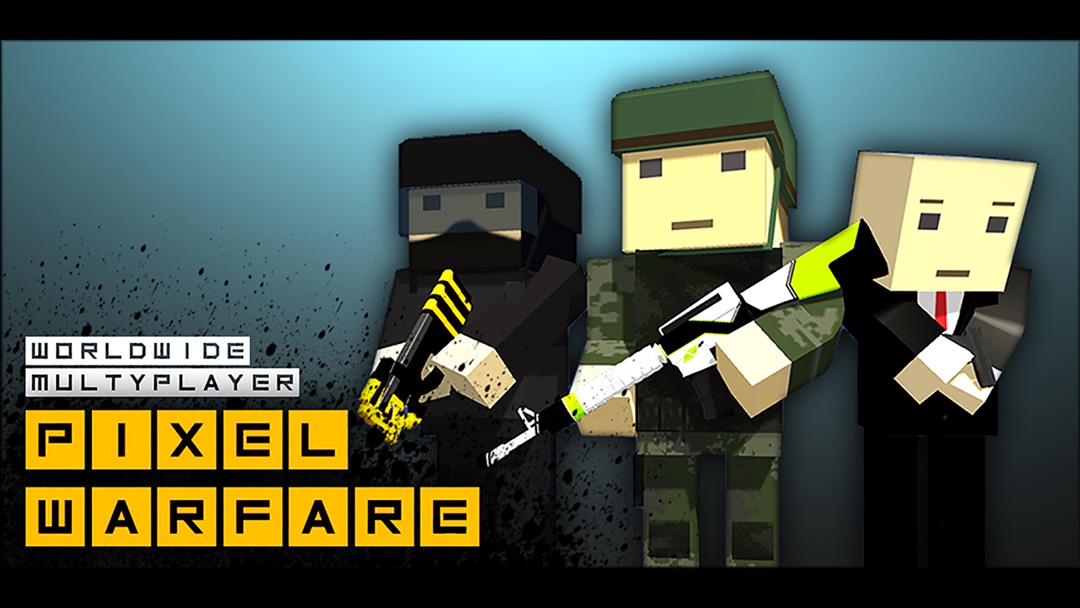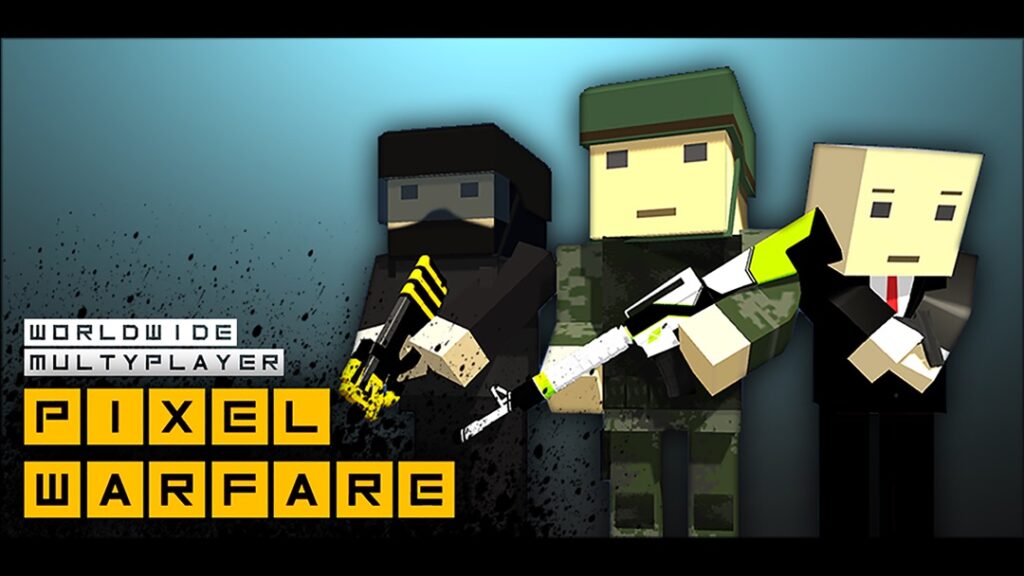Pixel warfare takes center stage as a captivating fusion of strategy and artistry in the gaming world. This genre, characterized by its nostalgic pixel art style, has evolved significantly over the years, intertwining historical combat with modern gameplay dynamics. From its humble beginnings to its current prominence, pixel warfare continues to attract gamers with its unique charm and engaging combat scenarios.
As players dive into this pixelated battlefield, they encounter an array of game mechanics that emphasize strategic thinking and quick reflexes. The blend of power-ups and weapon upgrades not only enhances gameplay but also allows for diverse player strategies, making each match a unique experience. With vibrant aesthetics and community-driven development, pixel warfare stands as a testament to the creativity and skill of the gaming community.
Introduction to Pixel Warfare
Pixel warfare is a unique and engaging genre within the gaming industry that emphasizes combat in a pixelated environment. This style resonates with both nostalgia and innovation, appealing to gamers who appreciate simplicity and creativity in design. The charm of pixelated graphics not only evokes memories of classic gaming but also complements the dynamic and fast-paced nature of combat mechanics, making it a standout genre in the modern gaming landscape.
The history of pixel-based combat games dates back to the early days of video gaming, where limitations in technology led to the creation of blocky, pixelated visuals. Titles like “Space Invaders” and “Pac-Man” set the stage for what would evolve into more sophisticated pixel warfare games. As technology advanced, so did the complexity and depth of these games, allowing for more intricate gameplay mechanics and storytelling elements. The resurgence of retro-styled games in the 2000s, driven by indie developers, solidified the place of pixel warfare in contemporary gaming culture.
Appeal of Pixel Art in Digital Warfare Scenarios
The appeal of pixel art in digital warfare scenarios is multifaceted, attracting both casual and hardcore gamers. Pixel art encapsulates a sense of nostalgia while allowing for creative expression in character and environment design. This aesthetic offers a perfect canvas for imaginative worlds where gameplay takes precedence over hyper-realistic graphics. The limitations of pixel art encourage developers to focus on gameplay mechanics, story, and player interaction, creating a rich gaming experience.
The following points illustrate why pixel art remains a popular choice in digital warfare games:
- Nostalgic Value: Many gamers have fond memories of classic titles featuring pixel art, creating an emotional connection that enhances the gaming experience.
- Accessibility: The simplicity of pixel graphics makes them easier to develop and modify, facilitating a broader range of indie developers to create engaging titles.
- Unique Aesthetic: Pixel art provides a distinct visual style that stands out in a market dominated by high-definition graphics, offering a refreshing alternative that attracts diverse audiences.
- Focused Gameplay: With less emphasis on graphics, developers can invest time in refining gameplay mechanics, resulting in games that prioritize fun and engagement.
- Community Engagement: Pixel art often fosters a strong community around game development, as fans can easily contribute to modifications and fan art, enhancing the overall experience.
The enduring charm of pixel warfare lies in its ability to blend nostalgia with innovative gameplay, creating a unique niche that continues to captivate players across generations.
Game Mechanics in Pixel Warfare
Pixel Warfare games are characterized by their unique blend of fast-paced combat and strategic gameplay set in a pixelated environment. Players engage in intense battles, utilizing a variety of mechanics that enhance both the challenge and enjoyment of the game. Understanding these mechanics is crucial for players seeking to improve their skills and achieve victory in the pixelated arena.
Key gameplay mechanics in Pixel Warfare encompass movement, weapon handling, and combat strategies that players must master to succeed. The design focuses on accessibility while allowing for depth in strategy. Players navigate maps filled with obstacles and varying terrains, which affects movement speed and cover options. The mechanics appeal to both casual gamers and competitive players, fostering an engaging environment for all.
Core Gameplay Mechanics
The mechanics that define gameplay in Pixel Warfare are essential for creating a dynamic combat experience. These include:
- Character Movement: Players can sprint, jump, and crouch to evade enemy fire and navigate the battlefield effectively. Mastering movement allows players to dodge attacks and position themselves advantageously.
- Weapon Selection: A diverse range of weapons, such as rifles, shotguns, and melee options, are available, each with unique statistics like damage, range, and reload time. Players choose weapons based on personal playstyle and the specific combat scenario.
- Health and Defense: Players must manage their health through defensive tactics and regeneration mechanics. Finding cover and using shields can prevent damage and provide strategic advantages during firefights.
- Map Awareness: Knowledge of the map layout is crucial for effective gameplay. Players utilize high ground and hidden paths to outmaneuver opponents, enhancing their strategic options.
Player Strategies in Pixel Combat
Effective player strategies in pixel combat scenarios revolve around a combination of tactics that exploit the game’s mechanics. Players often adapt their strategies based on the opposing team’s behavior and the dynamics of the match. Common strategies include:
- Flanking: Players often utilize map knowledge to outmaneuver enemies by approaching from unexpected angles, catching foes off guard and securing kills.
- Team Coordination: Working closely with teammates to coordinate attacks and defenses enhances overall effectiveness. Players communicate tactics, such as covering fire or simultaneous assaults, to dominate the battlefield.
- Resource Management: Players prioritize collecting ammunition and power-ups to maintain combat effectiveness. Awareness of resource locations can turn the tide of battle.
Role of Power-ups and Weapon Upgrades
Power-ups and weapon upgrades play a significant role in enhancing gameplay by providing players with additional advantages. These enhancements can drastically change the dynamics of combat, offering opportunities for strategic shifts and power plays.
Power-ups may include temporary boosts such as increased speed, enhanced damage, or shields that provide protection. They incentivize players to explore the map and engage in risky situations to gain advantages over their opponents.
Weapon upgrades, on the other hand, improve base weapon stats, such as increasing fire rate, damage, or accuracy. Players may encounter upgrade stations during matches, allowing them to customize their loadouts tailored to their preferred combat style.
“The right power-up at the right moment can be the difference between victory and defeat.”
In conclusion, mastering the core mechanics, strategic approaches, and effective use of power-ups and upgrades is vital for success in Pixel Warfare. By understanding and adapting to these elements, players can elevate their gameplay and make a significant impact in the pixelated battleground.
Aesthetic Elements of Pixel Warfare
The aesthetic elements of pixel warfare games play a crucial role in shaping player experiences and immersion. Pixel art, with its distinct visual charm, captures the essence of nostalgia while delivering a modern gaming experience. This blend of retro aesthetics and contemporary gameplay mechanics creates a unique atmosphere that invites players into vibrant, imaginative worlds.
The use of pixel art style not only defines the overall visual appeal but also aids in crafting immersive environments. Each pixel contributes to the storytelling, creating landscapes and characters that resonate with players on a personal level. The charm of pixel art lies in its simplicity, allowing players to fill in the gaps with their imagination, which enhances the sense of agency and presence within the game.
Color Palettes and Psychological Effects, Pixel warfare
Color palettes in pixel warfare games are meticulously chosen to evoke specific emotional responses and enhance gameplay. The psychological impact of color can significantly influence player behavior and engagement.
For instance, warm colors such as reds and oranges are often used to signify danger or urgency, while cooler tones like blues and greens can create a sense of calm or safety. These palettes not only affect the mood of the game but also guide players’ decisions during gameplay.
“Colors can enhance the storytelling aspect of games, leading players to feel more connected to their environment and characters.”
The following table Artikels various color palettes employed in notable pixel warfare games, demonstrating their psychological implications:
| Game Title | Color Palette | Psychological Effect |
|---|---|---|
| Pixel Warfare X | Bright Primaries | Excitement, Urgency |
| Terraria | Earthy Tones | Stability, Comfort |
| Superbrothers: Sword & Sworcery EP | Pastel Shades | Whimsy, Nostalgia |
| Hyper Light Drifter | Contrasting Neons | Innovation, Mystery |
Through thoughtful design choices, developers harness color to not only beautify the game but also subtly guide players through their journey, enriching the overall experience in pixel warfare environments.
Character Design in Pixel Warfare
Character design plays a pivotal role in the realm of Pixel Warfare, where unique visual styles and personality traits contribute to the overall gaming experience. In this pixelated universe, characters are not just avatars but embodiments of gameplay mechanics, engaging players on multiple levels. The diverse character archetypes enhance the atmosphere, enriching the narrative and fostering connections between players and the digital world.
Character archetypes in Pixel Warfare often reflect various roles, each with distinct traits and abilities that influence gameplay. These character types cater to different playstyles, allowing players to choose a character that aligns with their strategic preferences. The importance of character customization cannot be understated, as it significantly enhances player engagement and investment in the game.
Common Character Archetypes
In Pixel Warfare, character archetypes are designed to fulfill specific roles within the game, adding depth to both combat and strategy. Below are some of the common character types and their associated traits:
- Sniper: Specialized in long-range attacks, snipers possess high accuracy and stealth abilities. Their skills allow them to eliminate targets from a distance, making them ideal for players who prefer a tactical approach.
- Tank: Tanks have high durability and health, enabling them to absorb damage in battles. They often serve as frontline defenders, protecting teammates and controlling the battlefield.
- Assassin: Quick and agile, assassins excel in speed and evasion. Their abilities focus on close-quarters combat, allowing them to deliver swift strikes and escape before being detected.
- Engineer: Engineers are proficient in constructing barriers and deploying gadgets. Their support role enhances team dynamics by providing strategic advantages through the use of technology.
Each archetype adds layers to gameplay, creating a balanced environment where player choices directly affect outcomes.
Traits and Abilities of Character Types
The distinction among character types is defined not only by their roles but also by their unique abilities and traits. Understanding these attributes is crucial for players aiming to maximize their potential in Pixel Warfare.
Character abilities significantly influence tactical decisions and team synergy.
Here are some traits commonly associated with various character types:
- Sniper Traits: Enhanced precision, stealth movement, and ability to see enemies from afar.
- Tank Traits: Increased health points, damage resistance, and ability to lead charges into enemy lines.
- Assassin Traits: High speed, critical strike capabilities, and stealth abilities that allow for silent kills.
- Engineer Traits: Resourcefulness in crafting tools, ability to repair structures, and strategic deployment of traps.
These traits not only define how each character interacts with their environment but also how players can strategize to utilize these abilities effectively in various game scenarios.
Significance of Character Customization
Character customization serves as a critical aspect of player engagement in Pixel Warfare. It allows players to express their individuality and create a personal connection with their character. Customization options often include cosmetic alterations, skill enhancements, and the ability to choose different loadouts.
The significance of character customization can be highlighted through the following points:
- Player Identity: Customizing characters allows players to forge their identity within the game, fostering a sense of belonging and personal investment.
- Strategic Diversity: Customization enables players to adapt their characters to specific gameplay styles, enhancing strategic options and gameplay variety.
- Increased Engagement: The ability to personalize characters keeps players motivated and engaged, as they are more likely to invest time in a game where they feel a personal connection.
Through character customization, players become more invested not just in their characters but in the game itself, leading to a more enriched gaming experience.
Multiplayer Dynamics in Pixel Warfare

Multiplayer interactions play a crucial role in shaping the overall experience in pixel warfare games. These dynamics not only enhance engagement but also foster a vibrant community of players who collaborate or compete against each other. The social interactions that arise from multiplayer formats can dramatically alter gameplay, encouraging teamwork, strategic planning, and sometimes even rivalries that evolve into long-term friendships or enmities.
Multiplayer gameplay is characterized by two primary dynamics: cooperative and competitive. Cooperative gameplay involves players working together towards a common goal, such as completing missions or defeating powerful bosses. In contrast, competitive gameplay pits players against each other, emphasizing individual skill and strategy to emerge victorious. Both dynamics contribute uniquely to the gameplay experience, fostering different types of interactions and challenges.
Examples of Cooperative and Competitive Gameplay Dynamics
Cooperative and competitive gameplay in pixel warfare games creates varied experiences. In cooperative modes, players unite to face challenges, build strategies, and achieve objectives together. For instance, games like “Mine Warfare” emphasize teamwork in battling against hordes of enemies, where coordinated attacks and resource sharing are vital for survival. On the other hand, competitive modes, such as those seen in “Pixel Gun 3D,” focus on player-versus-player (PvP) combat, where individual skill and tactics determine the winner in fast-paced matches.
To illustrate the differences in dynamics, here are some notable multiplayer pixel warfare games along with their unique features:
Popular Multiplayer Pixel Warfare Games
The multiplayer landscape in pixel warfare is rich and diverse, featuring numerous games that cater to various play styles. Each game brings something unique to the table, enhancing player interaction. Below is a selection of popular titles:
- Pixel Gun 3D: A highly popular battle royale and shooter game that features various modes including cooperative campaigns and competitive deathmatches. Players can customize their characters and weapons, enhancing the competitive edge.
- Block Strike: This game offers a mix of competitive and cooperative gameplay, with a variety of maps and modes. Players can team up to complete objectives or compete against each other in classic team deathmatches.
- Mine Warfare: Focused on cooperative gameplay, players gather resources and build defenses while battling waves of monsters, emphasizing teamwork and strategy to survive.
- Roblox: While not solely a pixel warfare game, Roblox hosts numerous pixelated shooter games that encourage both competitive and cooperative dynamics through player-generated content and social interaction.
- Pixel Warfare 3: A blend of first-person shooting and pixel graphics, this game allows players to engage in both cooperative missions and competitive battles, with a focus on creating a fun multiplayer environment.
The variety of multiplayer dynamics in pixel warfare games not only enhances the gaming experience but also cultivates a unique community atmosphere, where players can either bond over cooperative gameplay or thrive in competitive settings.
Community and Culture Surrounding Pixel Warfare
The community and culture surrounding pixel warfare games significantly influence their growth and evolution. Online communities play a pivotal role in fostering engagement, creativity, and competitive spirit among players. As players rally around shared interests in pixel art and gameplay mechanics, they create a vibrant ecosystem that enhances the gaming experience.
The rise of user-generated content is a hallmark of the pixel warfare genre. Players contribute to the game’s landscape by designing new maps, characters, and skins, which not only enriches the gameplay but also serves as a testament to the community’s creativity. This level of involvement allows players to leave their mark on the game, fostering a sense of ownership and attachment.
Impact of Online Communities on Growth
Online communities have become vital to the sustenance and expansion of pixel warfare games. Through platforms such as forums, Discord servers, and social media, players share experiences, strategies, and creations, leading to a more engaged player base. These interactions often translate into a more robust gameplay experience through collaboration and competition.
Significant aspects include:
- Networking Opportunities: Communities allow players to connect with each other, forming friendships and alliances that enhance the social aspect of gaming.
- Feedback Mechanisms: Players provide valuable insights and suggestions, which developers can implement to improve gameplay and address issues.
- Promotion of Events: Community-driven forums are essential for organizing tournaments and in-game events that attract wider participation.
User-Generated Content and Its Influence
User-generated content is a powerful engine driving engagement and innovation in pixel warfare games. Players create a variety of assets, from custom skins to unique game modes, allowing for personalization and diversity within the game.
The importance of user-generated content can be highlighted through:
- Customization: Players enjoy tailoring their characters and environments, fostering a deeper connection to the game.
- Community Challenges: Players often engage in friendly competitions to create the best maps or skins, intensifying the creative drive within the community.
- Content Sharing Platforms: Websites dedicated to sharing user-generated content emerge, further solidifying community bonds and enhancing visibility.
Community Events and Tournaments
Community events and tournaments are essential for cultivating competitive spirit and collaboration within the pixel warfare landscape. These events often unite players across various platforms, enhancing the overall gaming experience.
Examples of notable community events include:
- Annual Pixel Warfare Championships: These tournaments gather players from around the globe, showcasing top talent and innovative strategies.
- Seasonal Events: Games host themed events that coincide with holidays or game anniversaries, providing fresh content and challenges for players.
- Collaborative Map-Making Contests: Communities often hold contests encouraging players to create and submit their maps, with winners receiving in-game rewards or recognition.
Technical Considerations in Pixel Warfare Development
The development of pixel warfare games requires a deep understanding of various technical aspects that can greatly impact the gameplay experience. From programming challenges to performance optimization, developers must navigate numerous hurdles to create engaging and visually appealing games. This segment will delve into the critical technical considerations that shape pixel warfare projects.
Programming Challenges in Pixel Warfare Development
Creating pixel warfare games presents unique programming challenges that developers must overcome to ensure smooth gameplay and engaging mechanics. One major challenge involves managing the grid-based movement often associated with pixel art. Developers need to implement efficient pathfinding algorithms, such as A* or Dijkstra’s, to facilitate seamless navigation. Additionally, collision detection can be complex due to the pixelated nature of the graphics, requiring precise hitbox calculations to avoid frustrating player experiences.
Another challenge lies in the implementation of multiplayer functionalities. Ensuring synchronization between players requires robust server management and real-time data handling to maintain a stable gaming environment. Network latency and lag can disrupt gameplay, making it imperative to optimize data transmission and server response times.
Performance Optimization for Pixelated Graphics
Performance optimization is crucial in pixel warfare games, as these visuals demand efficient resource management to support fluid animations and quick load times. Developers should focus on several strategies to enhance performance while maintaining the charm of pixel art.
A key technique is texture atlasing, which combines multiple small images into a single large image to minimize the number of texture bindings during rendering. This significantly reduces the overhead on the GPU, leading to smoother frame rates.
Additionally, developers can implement level of detail (LOD) techniques, where objects are rendered in different resolutions based on their distance from the camera. This method conserves processing power by reducing the detail of far-away objects that do not need high fidelity.
To ensure optimal performance on various devices, developers should use profiling tools to identify bottlenecks in the game’s performance. Regular testing on multiple hardware configurations allows for fine-tuning and adjustments, enhancing user experience across platforms.
Game Engine Options for Pixel Warfare Projects
Selecting the right game engine is essential for the successful development of pixel warfare titles. Different engines offer distinct functionalities and workflows that cater to the needs of pixel art games.
Popular game engines suitable for pixel warfare projects include:
- Unity: Known for its versatility and robust asset store, Unity allows developers to easily implement 2D pixel art through its 2D tools and features.
- Godot: This open-source engine provides a lightweight and flexible platform for 2D game development, making it ideal for indie developers focusing on pixel aesthetics.
- GameMaker Studio 2: A user-friendly engine that specializes in 2D games, GameMaker offers a drag-and-drop interface alongside a powerful scripting language for more advanced features.
- Construct 3: This engine is particularly suitable for those who prefer a visual programming approach, allowing for rapid prototyping and development of pixel-based games.
Each of these engines has its strengths, and developers should consider their project requirements, team expertise, and desired features when making a selection. By leveraging the appropriate tools, development teams can create captivating pixel warfare experiences that resonate with players.
Future Trends in Pixel Warfare

As the landscape of gaming evolves, pixel warfare games are poised to embrace numerous innovative trends that enhance gameplay and aesthetics. With the rapid advancement of technology, both designers and players are likely to experience a reimagining of what pixel warfare can offer. This section Artikels anticipated shifts in design and gameplay, exploring how they can transform user experiences and community interactions.
Emerging trends in pixel warfare are driven by technological advancements and player preferences. From augmented reality (AR) integration to enhanced graphic capabilities, these trends signify a transformative period for pixel warfare games. Innovations in gameplay mechanics, such as adaptive AI and procedural generation, are expected to provide players with unique challenges and immersive environments.
Innovations in Gameplay Mechanics and Graphics
The future of gameplay mechanics in pixel warfare hinges on the integration of emerging technologies and innovative design principles. Here are key innovations expected to reshape the experience:
– Procedural Generation: This technique allows for the creation of dynamic and unpredictable environments, making each gaming session unique. Players can expect worlds that adapt and evolve, responding to their actions and strategies.
– Adaptive AI: Artificial intelligence will become more sophisticated, allowing non-player characters (NPCs) to learn from player behaviors. This can lead to more challenging and realistic encounters, enhancing the overall gameplay experience.
– Cross-Platform Play: As gaming communities grow, the ability for players on different platforms to interact will become more prevalent. This opens up the competitive landscape, allowing for larger multiplayer experiences and community-building.
– Augmented Reality Features: Incorporating AR technology can create immersive experiences that blend the digital and physical worlds. Players can engage in real-time combat scenarios that utilize their actual surroundings.
Anticipated Developments in Pixel Warfare Aesthetics
The aesthetic evolution of pixel warfare games is crucial to maintaining player engagement and enhancing immersion. Developers are likely to push the boundaries of visual design, and the following table Artikels anticipated developments:
| Aspect | Future Development | Impact |
|---|---|---|
| Color Palettes | Broader use of gradients and dynamic lighting | Increases visual depth and emotional impact |
| Animation Fluidity | Higher frame rates and smoother transitions | Enhances gameplay realism and player engagement |
| Environmental Design | More intricate and interactive backgrounds | Creates a more immersive and engaging world |
| Character Customization | Expanded options for personalization | Fosters player identification and attachment |
Ultimate Conclusion
In conclusion, pixel warfare encapsulates the essence of modern gaming by merging visual art with dynamic gameplay. As trends continue to evolve, the future of pixel warfare promises exciting innovations and deeper engagement for players. With a robust community and continually advancing technology, this genre is set to redefine the landscape of digital combat, inviting both veterans and newcomers to partake in its pixelated glory.
If you’re looking for a fun way to pass the time while offline, the dino chrome game is a perfect choice. This simple yet addictive game challenges you to control a pixelated dinosaur as it jumps over cacti and ducks under obstacles. Whether you’re at work or just bored, giving this game a quick try can bring a smile to your face and keep you entertained for a while.
Have you ever faced boredom while browsing the internet? The dino chrome game is a delightful way to kill time. This offline game, featuring a cute T-Rex, not only entertains but also challenges your reflexes. So the next time your connection drops, don’t fret—just jump into the world of Dino and see how far you can go!


